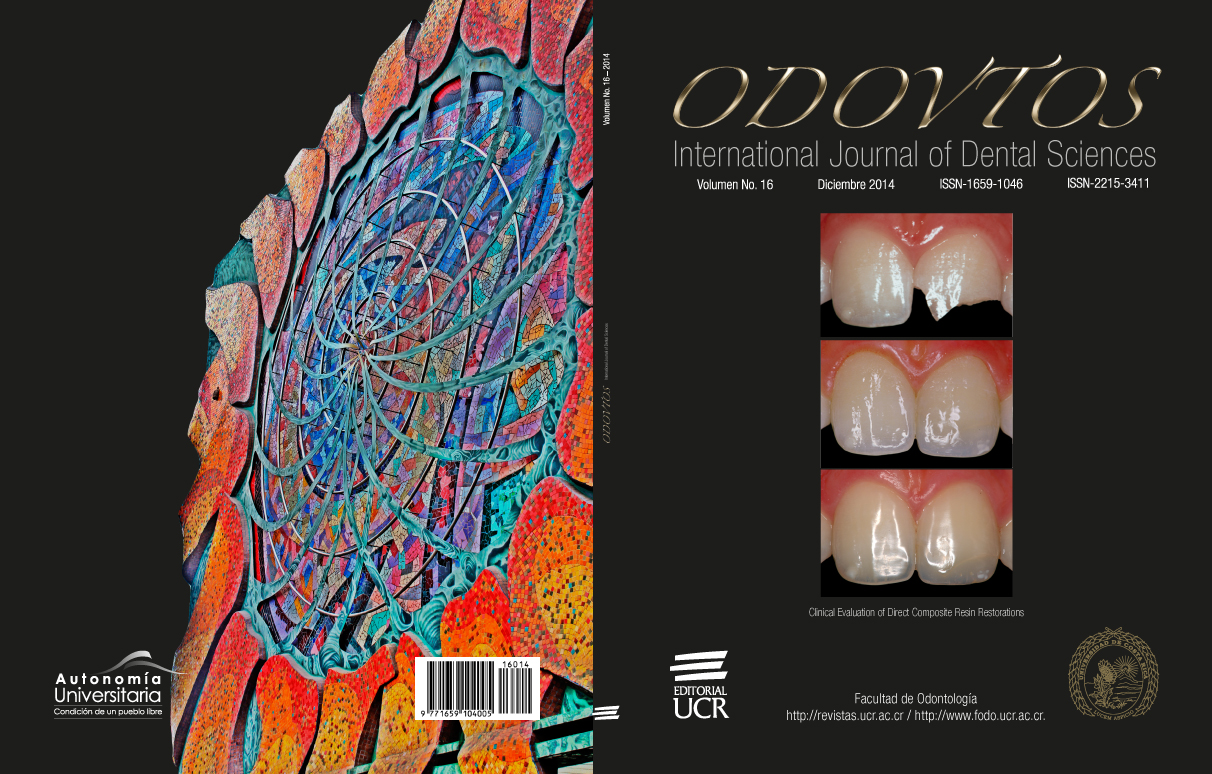Abstract
The aim of this study was to determine whether there is any significant difference in average days of Enterococcus faecalis microleakage through the coronal seal of four temporary restorative materials used in endodontics , Cavit® (3M), Duotemp® (Coltène), Clip® (VOCO) y Cimpat L.C® (Septodont). Ninety caries free extracted human premolars were randomly divided into 4 groups after the coronal access preparation; Group 1. Cavit® , Group 2 Duotemp® , Group 3. Clip , Group 4 Cimpat and controls were not restored with any material. Each group were mounted in 24 sterile well plates. Each well contained 2 ml of broth with bromocresol purple indicator 1% glucose. All Samples, except negative controls, were inoculated with E. faecalis in saline 0.85% 10 ^ 6 U / ml. The groups were observed daily for 30 days to detect changes in the indicator color from purple to yellow. ®. Jonckheere-Terpstra test was used with a 95% of confidence. The average days Filtration of materials was 12.50 for Clip®, 12.83 for Cavit®, 13.44 for DuoTemp® and 14.44 for Cimpat LC®. The temporary restorative materials studied shows microbial leakage after 15 days.
References
Anderson, R. Powell, B. Pashley, D. 1988. Microleakage of Three Temporary Endodontic Restorations. J Endod, 14(10), 497 – 501.
Assed, S. Ito, IY. Leonardo, MR. Silva, LAB. Lopatin, DE. 1996. Anaerobic microorganisms in root canals of human teeth with chronic apical periodontitis detected by indirect immunofluorescence. Endod Dent Taumatol, 12, 66-69.
Ausina, V. Moreno, S. 2006. Tratado SEIMC de enfermedades infecciosas y microbiología clínica. Ed. Médica Panamericana.
Çelik,D.Tahan,E.Tas ̧demir,TEr,K.Tolga,K.2013. Coronal microleakage of various temporary fillings in standardized endodontic access cavities. Clinical dentistry and research, 37(2),23 – 28.
Cohen, S. Hargreaves, K. 2011.Cohen’s Pathways of the Pulp (10a . ed.) Texas :Mosby Elsevier
Craig, R. 1998. Materiales de odontología restauradora. 10a ed. EEUU: Harcourt Brace.
Nair, R. 1987. Light and Electron Microscopic Studies of Root Canal Flora and Periapical Lesions. J Endod, 13 (1), 29-39.
Negroni, M. Microbiología estomatológica. (2a ed.) Buenos Aires: Editorial Panamericana.
Swanson, K. Madison, S 1987. An Evaluation of Coronal Microleakage in Endodontically Treated teeth. Part I. Time Periods. J Endod, 13(2), 56 – 59.
Torabinejad, M. Walton, R. 2010. Endodoncia, principios y práctica. (4a ed.) St. Louis Missouri: Elsevier.
Zaia et al. 2002. An in vitro evaluation of four materials as barriers to coronal microleakage in root-filled teeth. Int Endod J. 2002. 35: 729 - 734.

